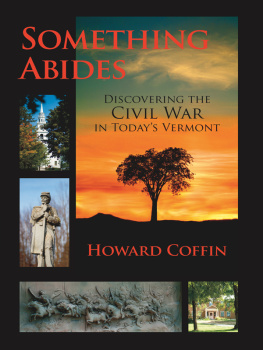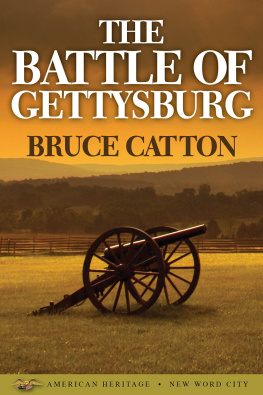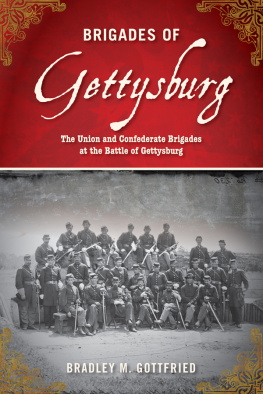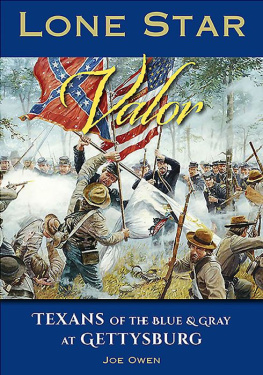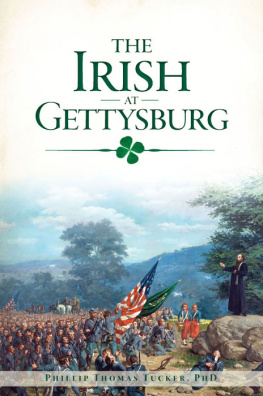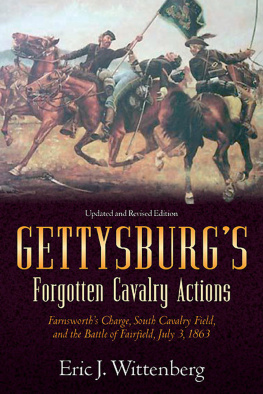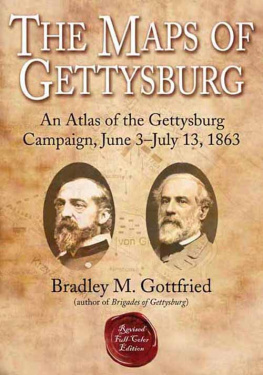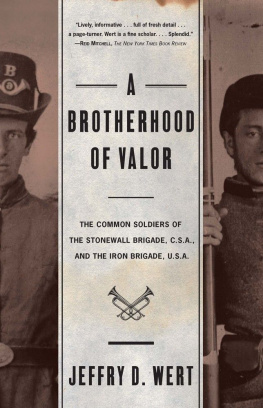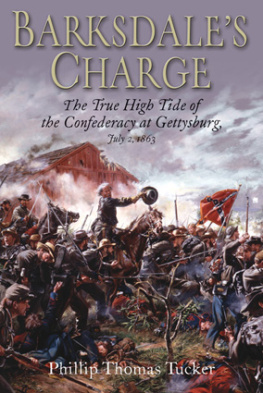NINE MONTHS TO GETTYSBURG

NINE MONTHS
TO GETTYSBURG
Stannards Vermonters and the
Repulse of Picketts Charge

HOWARD COFFIN

FOREWORD BY EDWIN BEARSS

Copyright 1997, 2011 by Howard Coffin
1st Paperback Edition 2011
All rights reserved. No part of this book may be reproduced in any form or by any electronic or mechanical means including information storage and retrieval systems without permission in writing from the publisher, except by a reviewer who may quote brief passages.
The publisher and author gratefully acknowledge permission to reprint excerpts from the following: Gettysburg, The Second Day, by Harry W. Pfanz, copyright 1987 by the University of North Carolina Press; Terrible Swift Sword, by Bruce Catton, copyright 1963 by Doubleday, a division of Bantam Doubleday Dell Publishing Group, Inc.; The Memoirs of Colonel John S. Mosby, copyright 1917 by Little, Brown and Company.
Library of Congress Cataloging-in-Publication Data are available
Nine Months to Gettysburg
ISBN 0-88150-400-9 (cloth)
ISBN 978-0-88150-967-0 (pbk)
Text and cover design by Glenn Suokko
Cover painting Stannards Vermonters
copyright Michael J. Middleton/The Champlain Collection
Maps by Paul Woodward, 1997 The Countryman Press
Published by
The Countryman Press, PO Box 748, Woodstock, VT 05091
Distributed by
W. W. Norton & Company, Inc., 500 Fifth Avenue, New York, NY 10110
Printed in the United States of America
10 9 8 7 6 5 4 3 2 1

DEDICATION
Hughes Oliphant Gibbons, Dartmouth class of 1930, servant of his country and lover of books, was a devotee of Civil War history. Born April 13, 1909, in Farragut Terrace, Pennsylvania, Gibbons, an English major at Dartmouth, studied at the University of Edinburgh before earning a degree in library science from Drexel University. He worked in the Georgetown Public Library in Washington and the Trinity College Library in Hartford, Connecticut, then for nine years as a librarian in Cairo, Egypt, where he gained an understanding of the Middle East. Turned down for military service because of health reasons at the outbreak of World War II, he went to work in army intelligence. For the remainder of his life he served the National Security Agency as a Middle East expert.
A quiet man who cared deeply about his family, Gibbons spent most of his leisure hours reading, particularly from his considerable Civil War library. That interest continued unabated until his sudden death, in 1973, of a heart attack. His knowledge of the Civil War was widespread and deep, with a particular focus on military activity in his native state of Pennylvania. With a special thanks to his niece Mary Stewart Baird, for her generous support and tireless help, I dedicate this book to Hughes Gibbons, hoping that in remembering the soldiers of the Second Vermont Brigade who served so well at Gettysburg, I also do honor to the memory of a good and decent man who lived a rich and valuable life.
In the Boston Journal of July 7, 1865, appeared the following account by war correspondent Carlton Coffin of his return to the Gettysburg battlefield: Now leaving this line [Harrows Brigade] and walking directly west... six or eight rods toward Cadoris house, we find a shallow ditch, yet remaining partly concealed by small scrub oaks. There were the nine months Vermont boys under Stannard... The Green Mountain State won for herself on that day a laurel which never will fade.
Oh how it stirs ones blood, wrote Coffin, to stand here upon this spot, to recall that scene, walk over the ground, trace the yet visible outlines of the conflict and read the historic recordthat there the hopes of the confederacy began to wanethat there the future of our country began to brighten.
I hope that no vandal hand will ever be permitted to touch one of those trees, that no other growth will ever be permitted to rise, that the fences may never be removed or others erected, but that through the coming years the features may remain as they are. As the years roll on we shall understand more fully than now how great were the issues involved, and how momentous the decisions of that hour.
CONTENTS
DISASTER ON THE PENINSULA: LINCOLN
CALLS UP THE MILITIA
ACKNOWLEDGMENTS
I owe great thanks to very many people, living and dead, for their help on this book. Foremost among those departed are George Grenville Benedict, private and then lieutenant in the 12th Vermont, who wrote his wonderful two-volume Vermont in the Civil War and followed it with shorter accounts of his service in the Second Vermont Brigade; and Ralph Orson Sturtevant, a private in the 13th Vermont, who assembled the Historical and Biographical History of the 13th Regiment. Much is also owed to other brigade members, such as Edwin Palmer, Pvt. John Williams, and Cpl. John Williams, who kept diaries and turned them into books. The collected letters of Roswell and Mary Farnham, along with her diary, were invaluable, as were the letters of Wheelock Veazey and the Hammond family (copies of which were generously given me by Sidney Hammond), and the illustrations of William Henry Jackson. Special thanks go to Clifford Heustis, Elizabeth Bordeaux, Larry and Allan Keyes, and Vernon Turner, who provided family letters. And great thanks are due all the families who preserved letters, many of which now reside in the wondrous collections of the Vermont Historical Society and the University of Vermonts Special Collections.
Mary Stewart Baird, dear friend, has given me generous support, unfailing help, and constant good-hearted encouragement through the high and low points inevitably encountered while researching and writing a book. I hope that this effort is an adequate tribute to her uncle, Hughes O. Gibbons. I thank Edwin Bearss, friend, battlefield savior, and former co-member of the Civil War Sites Advisory Commission, for his support and advice, for reading the manuscript, and for accompanying me on explorations of northern Virginia. During those travels, Tersh and Sally Boasberg time and again opened their Washington home to me and offered welcome advice, at the same time waging their tireless fight to save the Brandy Station battlefield. Historian and preservationist James McPherson, friend and also a former fellow member of the Civil War Sites Commission, provided valued advice, as did friend Robert Krick, also a defender of battlefields, without whose help, it seems, few Civil War books would be written. Historians Harry Pfanz and Scott Hartwig walked with me the hallowed ground of Gettysburg. The staff of the library at the Gettysburg National Battlefield was most helpful. At the Vermont Historical Society, Barney Bloom and Paul Carnahan rendered very patient and inspired support. There, historian Edward Hoyt offered sage counsel. The same was true at the University of Vermonts Special Collections, where Connell Gallagher and Jeffrey Marshall and staff were always helpful. David Blow at UVMs Archive also advised. Peggy Daniels at the Fairbanks Museum in St. Johnsbury made available the wonderful William Herrick diaries. Brad and Sue Limoge, in Morrisville, Vermont, tirelessly sought material and made their collection available, while offering constant good-natured support. Elliott and Florence Morse, of Montpelier, Vermont, provided valuable information. Nicholas Picerno of Springfield, Vermont, offered books and suggestions. Vincent Vellucci, in Woodstock, Vermont, solved my computer problems. Robert Manasek and Dean Knudsen, respectively acting superintendent and historian of the Scotts Bluff National Monument in Nebraska, made available the William Henry Jackson sketches and photos. Glenn Suokko, again, ably designed a Coffin book. Phyllis Lavelle at the Bradford Historical Society provided the photos of the Farnhams. The late Frank Teagle, of Woodstock, generously supported the book, as did Susan Audy, through a gift of reference books, in memory of her husband Stephen Audy. John Stevenson, of George Mason University, showed me the parklands along the Occoquan and Bull Run that preserve places where Vermonters served. My friend Peter Jennison, as with my book
Next page

